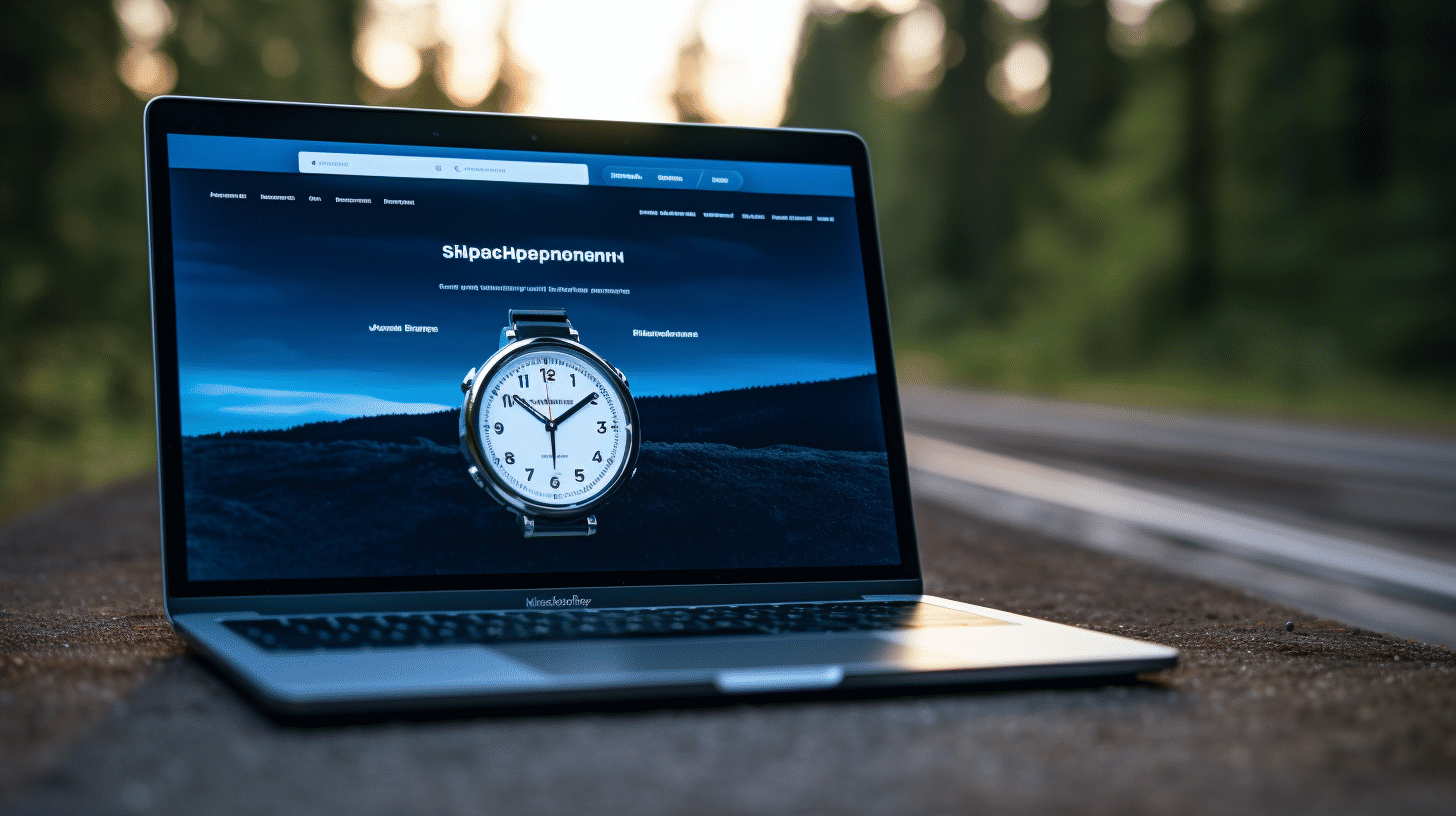隨著網路的不斷發展,網站使用者的要求變得比以往更加嚴格。他們希望網站能夠快速且有效率地加載,為他們提供最佳的用戶體驗。加載緩慢的網站可能會讓用戶感到沮喪,導致他們放棄該網站並尋找其他選擇。
為了滿足不斷增長的用戶期望,網站所有者和開發人員必須優先考慮網站的載入速度。一個受歡迎的內容管理系統經常面臨載入速度慢的挑戰,那就是 WordPress。由於 WordPress 網站擁有眾多的功能和可自訂選項,因此有時會出現效能緩慢的情況。
在本文中,我們將探討快速載入速度對於 WordPress 網站的重要性、載入時間緩慢的潛在原因,以及最重要的是,如何加快您的 WordPress 網站速度。讀完本文後,您將清楚了解確保 WordPress 網站速度快如閃電所需採取的步驟。
因此,讓我們深入研究並發現加速 WordPress 網站載入時對速度的需求。您的用戶將會感謝您! 😊
快速加載速度的重要性
⚡️您是否知道網站的載入速度會顯著影響使用者體驗、SEO 排名和轉換率?這是真的!在當今快節奏的世界裡,人們的注意力持續時間比以往任何時候都短,擁有一個載入速度快的網站對於成功至關重要。
使用者體驗
⌛️當使用者造訪您的網站時,他們希望它幾乎可以立即載入。如果您的網站載入時間過長,他們可能會點擊離開並轉而訪問競爭對手的網站。載入時間緩慢可能會導致用戶感到沮喪、跳出率高以及對您的品牌產生負面看法。另一方面,快速加載的網站提供了無縫且愉快的用戶體驗,讓訪客保持參與並更有可能探索您的內容。
搜尋引擎優化排名
📈搜尋引擎(例如 Google)將載入速度視為網站排名因素之一。事實上,Google已經明確表示,加載速度快的網站在搜尋結果中享有優先權。這意味著,如果您的網站加載緩慢,不僅會導致糟糕的用戶體驗,還會對您的搜尋引擎排名產生負面影響。透過提高載入速度,您可以提高網站在搜尋結果中的可見度並吸引更多自然流量。
轉換率
💰快速的加載速度對於轉換率也起著至關重要的作用。當訪客在您的網站上獲得積極的體驗時,由於加載時間較快,他們更有可能停留更長時間,參與您的內容,並最終轉化為客戶。另一方面,網站載入緩慢會增加訪客放棄購物車或在完成所需操作之前離開的風險,從而導致失去銷售機會。透過優化網站的載入速度,您可以顯著提高轉換率並最大限度地提高您的收入潛力。
✨總之,快速的載入速度對於確保積極的用戶體驗、提高 SEO 排名和提高轉換率至關重要。投資網站優化並定期監控您的載入時間可以大大確保您的線上形象的成功。保持競爭優勢並為您的訪客提供閃電般的瀏覽體驗——這將帶來多方面的回報!
WordPress 網站速度慢的原因
您的 WordPress 網站是否需要很長時間才能載入? 🐢別擔心,你並不孤單!網站速度緩慢可能會讓網站所有者和訪客都感到沮喪。事實上,研究表明,網站速度慢會導致跳出率更高、用戶滿意度降低。那麼,是什麼原因導致您的網站速度變慢呢?讓我們來探討一些常見的罪魁禍首:
糟糕的託管🏚️
就像房屋的地基一樣,託管服務提供者的品質會對您網站的效能產生重大影響。如果您遇到載入時間緩慢的情況,則可能是由於託管服務不佳造成的。以下是低於標準的託管可能出現的一些問題:
- 伺服器資源有限:您的託管服務提供者可能會分配有限的伺服器資源,導致多個訪客同時造訪您的網站時載入時間很慢。
- 共享主機:共享主機方案雖然具有成本效益,但意味著您與其他網站共享伺服器資源。如果其中一個網站流量過大,則可能會影響您自己網站的效能。
- 伺服器位置:您的網站伺服器和訪客之間的實體距離會影響載入時間。如果您的主機服務提供者的伺服器距離您的目標受眾較遠,您的網站載入速度可能會很慢。
為了解決這些問題,請考慮升級到提供專用資源或內容分發網路 (CDN) 的更可靠的託管服務供應商,以確保最佳效能。
重度圖🖼️
視覺內容是任何網站的重要組成部分,但未優化的大型圖像可能會對載入時間造成嚴重負擔。如果您的網站包含高解析度圖像或未正確壓縮的圖像,它們可能會佔用寶貴的頻寬並降低網站速度。您可以採取以下措施來優化您的影像:
- 使用圖片壓縮插件:類似插件 斯馬什 或者 WP-最佳化 可以自動壓縮和優化您的圖像而不犧牲品質。
- 調整圖片大小:確保在將圖像上傳到 WordPress 媒體庫之前,已將圖像調整為適當的尺寸。這會阻止您的網站加載全尺寸圖像然後縮小它,從而浪費寶貴的加載時間。
透過優化圖像,您可以顯著減少頁面大小並提高網站的載入速度。
如何加速你的 WordPress 網站
⚡️ 簡介:網站速度為何如此重要
在當今快節奏的數位世界中,速度就是一切。使用者希望網站能夠快速加載,而緩慢的載入時間會嚴重影響使用者體驗和網站轉換率。對於 WordPress 網站而言,速度對於維持和提高線上可見度、用戶參與度和搜尋引擎排名至關重要。
但是你要如何確保你的 WordPress 網站速度極快呢?在本文中,我們將探討一些加速 WordPress 網站的基本技巧和竅門,幫助您為訪客提供無縫且愉快的瀏覽體驗。
選擇正確的託管服務
您選擇的託管服務在決定您的 WordPress 網站的速度和效能方面起著至關重要的作用。您的託管服務提供者負責儲存您的網站文件並將其提供給訪客的瀏覽器。如果您的主機服務緩慢或不可靠,這可能會成為您網站速度的主要瓶頸。
以下是為您的 WordPress 網站選擇託管服務時需要考慮的一些因素:
- 伺服器速度和可靠性:尋找能夠提供快速伺服器並擁有可靠正常運行時間記錄的託管服務提供者。
- 資料中心位置:選擇靠近目標受眾的資料中心位置,以最大限度地減少延遲並確保更快的網站載入時間。
- 可擴展性:確保您的託管服務可以處理您網站的流量需求,特別是在高峰使用期間。
- WordPress 託管:考慮選擇託管的 WordPress 主機,因為這些專門的服務針對 WordPress 網站進行了最佳化,並提供增強的速度和安全功能。
有關為您的 WordPress 網站選擇合適的託管服務的更多詳細信息,請查看我們的指南 選擇正確的託管服務.
優化你的圖片
圖像是大多數網站不可或缺的一部分,但如果沒有適當的最佳化,它們會嚴重影響網站的載入速度。較大的圖像檔案會降低網站速度並增加頻寬使用量。以下是一些優化圖片和提高 WordPress 網站速度的策略:
- 選擇正確的影像格式:對於照片使用 JPEG 格式,對於顏色較少或透明度較低的影像使用 PNG 格式。
- 調整影像大小和壓縮影像:將圖片上傳到 WordPress 網站之前,使用圖片編輯工具或外掛程式調整大小和壓縮圖片。
- 延遲載入:實現延遲加載,延遲螢幕外圖像的加載,直到用戶滾動到它們,從而減少初始頁面加載時間。
- 內容傳遞網路 (CDN):考慮使用 CDN 來儲存和提供您的影像,利用其分散式網路更快地向訪客提供影像。
有關優化 WordPress 網站圖片的更全面指南,請參閱我們的文章 優化你的圖片.
選擇輕量級主題
您為 WordPress 網站選擇的主題會對其速度和效能產生重大影響。雖然視覺上吸引人的主題可能很誘人,但它們通常帶有臃腫的程式碼和不必要的功能,可能會降低網站速度。選擇輕量級、編碼良好的主題可以幫助提高您的網站速度。尋找以下主題:
- 專為速度和性能而設計。
- 擁有乾淨、簡約的程式碼。
- 提供客製化選項而不影響速度。
有關輕量級和優化的 WordPress 主題列表,請查看我們的推薦 選擇輕量級主題.
限制插件的使用
外掛程式對於為您的 WordPress 網站添加功能非常有用,但明智地使用它們至關重要。安裝過多的外掛程式或依賴編碼不良的外掛程式會降低您的網站速度。使用外掛時需要記住以下一些提示:
- 評估插件的必要性:僅安裝對您網站的功能至關重要的外掛程式。
- 定期檢查並刪除未使用的插件:未使用的外掛程式仍然會影響您網站的速度,因此請定期檢查並刪除不再需要的任何外掛程式。
- 選擇輕量級替代方案:尋找佔用空間較小且積極維護以獲得最佳性能的插件。
有關管理外掛程式和優化 WordPress 網站速度的更多指導,請參閱我們的 限制插件的使用.
記住這些提示,您可以採取重要措施來加快您的 WordPress 網站速度並為您的訪客提供無縫的瀏覽體驗。透過優化您的託管服務、圖像、主題和外掛程式的使用,您可以確保您的網站快速加載,保持用戶參與度並提高您的整體線上形象。請記住,更快的網站不僅可以增強用戶體驗,還會影響您網站的搜尋引擎排名。那麼,讓我們開始加速您的 WordPress 網站並提升您的線上成功率吧!
測量網站速度的工具
在快節奏的線上瀏覽世界中,速度就是一切。用戶希望網站能夠快速加載,而緩慢的加載時間可能會損害用戶體驗和網站的整體成功。因此,對於網站所有者和開發人員來說,定期測量和優化他們的網站速度至關重要。但是如何才能準確衡量您的網站速度呢?進入網站測速工具!
以下四種受歡迎且可靠的工具可以幫助您測量網站的速度:
🚀 Google PageSpeed Insights
說到網站速度測量工具,Google PageSpeed Insights 是許多開發人員的首選。這個免費工具可以全面分析您網站的效能並提出優化建議以提高速度。它使用評分系統來評估您的網站速度並提供需要改進的領域的詳細見解。
📊 Pingdom
Pingdom 是另一個受歡迎的測量網站速度的工具。它允許您從世界各地多個位置測試您的網站的載入時間,從而讓您評估您的網站在不同的地理區域是否表現良好。 Pingdom 提供詳細的報告,突出顯示需要改進的領域,例如檔案大小和網站上各個元素的載入時間。
📈 GTmetrix
GTmetrix 提供您網站速度和效能的詳細分析。此工具可評估您網站的各個方面,包括頁面載入時間、頁面元素的大小以及網站的最佳化程度。 GTmetrix 為您的網站提供效能分數並提供有關如何提高其速度的建議。
⏱️ 網頁測試
WebPageTest 是一個功能強大的工具,可讓您從多個位置、瀏覽器和連線速度測量您網站的速度。它提供了各種效能指標的全面分析,包括第一個位元組時間、開始渲染時間和完全載入時間。 WebPageTest 還提供瀑布圖,直觀地描述您網站上不同元素的載入情況。
透過定期使用這些網站速度測量工具,您可以深入了解網站的速度效能,並做出明智的決策來優化其效能。無論您選擇使用 Google PageSpeed Insights、Pingdom、GTmetrix 還是 WebPageTest,每種工具都提供獨特的功能和詳細的分析,以幫助您提高網站速度並為用戶提供無縫的瀏覽體驗。
結論
總之,出於多種原因,WordPress 網站的載入速度至關重要。更快的載入速度可以改善用戶體驗、提高 SEO 排名並增加轉換率。透過解決網站速度慢的原因並實施加速 WordPress 網站速度的策略,您可以確保訪客擁有無縫且愉快的瀏覽體驗。
選擇正確的託管服務、優化圖片、選擇輕量級主題以及限制外掛程式的使用都是提高網站載入速度的有效方法。此外,利用 Google PageSpeed Insights、Pingdom、GTmetrix 和 WebPageTest 等工具可以幫助您衡量和分析您網站的效能。
如果您想將 WordPress 網站的速度和效能提升到一個新的水平,請考慮使用 Managed-WP.™。使用 Managed-WP,您可以優化網站的速度、安全性和可擴展性,讓您專注於最重要的事情—提供出色的使用者體驗。
請記住,更快的網站不僅可以吸引訪客,還可以幫助您的業務蓬勃發展。因此,請採取必要的步驟來加速您的 WordPress 網站的載入速度並享受它帶來的好處。
常見問題解答
- 為什麼網站載入速度很重要?
網站載入速度很重要,因為它直接影響用戶體驗、搜尋引擎排名和轉換率。網站加載緩慢會導致高跳出率和用戶不滿意,而加載速度快的網站可以提供更好的用戶體驗,並且在搜尋引擎中獲得良好排名的機會更高。
- 如何檢查我的 WordPress 網站的載入速度?
有幾種線上工具可用於檢查您的 WordPress 網站的載入速度。一些流行的包括 Google PageSpeed Insights、GTmetrix、Pingdom 和 WebPageTest。
- 影響網站載入速度的常見因素有哪些?
影響網站載入速度的常見因素包括伺服器效能、圖像優化、快取、CSS 和 JavaScript 檔案的縮小、內容分發網路 (CDN) 的使用以及重型插件和主題的使用。
- 有哪些外掛可以幫助加速WordPress網站的載入?
一些可以幫助加速 WordPress 網站載入的熱門外掛是 W3 Total Cache、WP Super Cache、WP Rocket、Autoptimize 和用於圖片優化的 Smush。
- 還有其他技術可以提高 WordPress 網站載入速度嗎?
是的,除了外掛之外,優化圖片、減少 HTTP 請求、啟用壓縮、使用輕量級主題、最小化外部腳本和利用瀏覽器快取也可以幫助提高 WordPress 網站的載入速度。



















